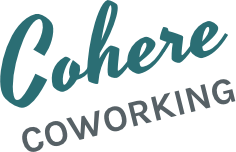One of the most difficult aspects of this year for many of us has been the sense of isolation and loneliness that we have had to endure. Long-term isolation and uncertainty can trigger feelings of fear, depression, and anxiety in anyone, making it more difficult to maintain our emotional equilibrium.
In 2012, an oft-cited study by the Karolinska Institutet in Sweden found a link between creative professions and mental illness. They cited writers as being particularly likely to suffer from serious psychiatric issues such as clinical depression, bipolar disorder, schizophrenia, anxiety, and substance abuse.
Aside from the “no duh” jokes from lots of writers and their friends on social media, many were left asking the obvious question: why?
Creatives in my social networks offered lots of anecdotal suggestions: Perhaps the mentally ill are just prone to write; society as a whole judges creativity as a type of mental illness; writing is cathartic so fragile people are more drawn to it as therapy. But, by and large, the most common explanation proposed was isolation. Writing is frequently a solo task and choosing it as a profession means spending a lot of time by yourself in front of a keyboard. This year, our ability to visit our favorite haunts has been hindered as well, making our isolation feel that much deeper. The bustling café is much quieter than usual, and a masked conversation with a stranger from six feet away is just plain awkward.
The fact of the matter is, for human beings, isolation is opposite to our natural inclination. Never has that been made so clear as in 2020.
Here are 3 reasons working in isolation can be particularly disastrous for creative professionals:
1. Humans are social creatures.
Except for a few scattered hermits and recluses, people need interaction with other people. People subjected to extended isolation experience episodes of confusion, depression, and anxiety, as well as personality changes.
Many creative professionals spend a great deal of time alone with their work. It’s a soul-searching process that requires us to dive deep into our emotional well. Having a supportive network of friends, family, and colleagues can help facilitate that process.
2. Isolation doesn’t beget inspiration
Many of the great creative geniuses of history, Vincent van Gogh, Marie Curie, Nicola Tesla, Emily Dickinson, even Steve Jobs, are frequently romanticized as lone geniuses, working away in solitude. These portrayals give rise to the myth of the reclusive artist. But how accurate is this idea?
While Vincent van Gogh treasured his solitude in the countryside of Arles, it was when his friend and rival Paul Gauguin came to visit that he was most inspired, with both men often reaching new heights in their craft. Even the notoriously reclusive Emily Dickinson kept up an active and vibrant social life through mail correspondence.
Although some privacy is needed for the process of creation, it is our experiences and interactions that truly ignite the spark of inspiration.
3. Self-employed creatives work best when we’re accountable.
Accountability is a struggle for most creative professionals. Sure, you get the client work done on time, but other things just seem to fall by the wayside. A grant proposal gets dropped here, a query gets pushed aside there, and you feel like you’re just treading water. So where should we turn when we find ourselves talking to the cat and still in our pajamas at 3 pm?
Announcing our goals to other professionals can give us the motivation to succeed at our personal goals by creating a sense of urgency and accountability.
But how do you find inspiring social interaction and reliable accountability while avoiding crowded areas and maintaining social distancing?
Joining a coworking community is a great way to ensure that you aren’t overwhelmed by isolation.
Coworking spaces are populated by a diversity of creative individuals. Not only will you meet people who do similar creative work to your own, but you’ll also meet people who do creative things you’ve never dreamed of! Coworkers LOVE to swap tales of failure and success, which can be educational and inspiring, and most creatives who join coworking spaces report higher levels of productivity almost immediately.
Coworking communities are also adept at keeping people accountable. Some, like Cohere Coworking, offer goal setting and accountability programs as part of membership, while other spaces might simply encourage members to develop informal accountability relationships. Members who take part in one of Cohere’s Cotivation groups meet once or twice a week to discuss their goals and check on each other’s progress.
If you’re feeling isolated (and maybe a little crazy?!) TRY COWORKING. We have a variety of virtual and in-person membership options available that come with a built-in community dedicated to keeping you sane. Get a free virtual tour of our facility today!
Photo by Alice Dietrich on Unsplash
About the Author: Cohere member Penny Leigh Sebring is an experienced freelance writer, neophyte speculative fiction author, and a gatherer of information and imaginary friends.

